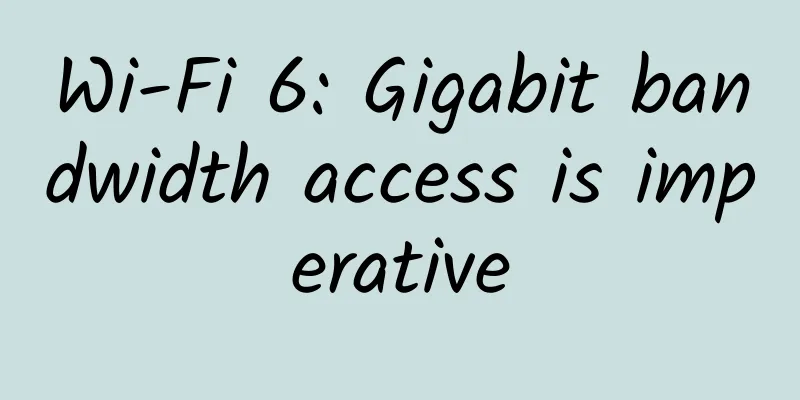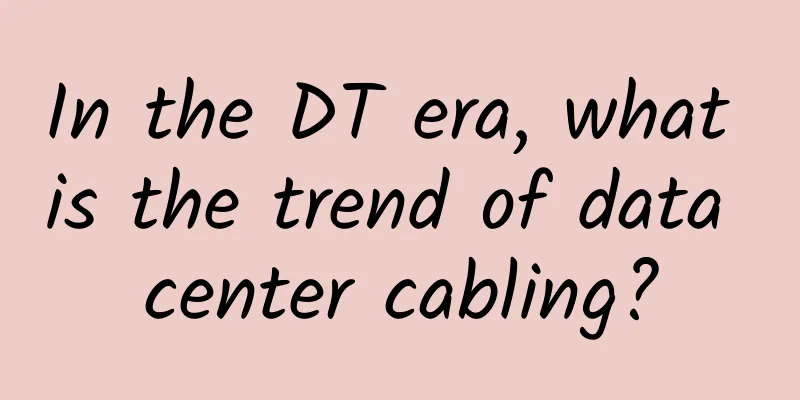Wi-Fi 6: Gigabit bandwidth access is imperative

|
As one of the most important infrastructures, fiber-optic broadband has entered hundreds of millions of households. As of July 2019, the number of fiber-optic broadband users exceeded 400 million, and users with fiber-optic broadband above 100M accounted for 78.3%. 200M broadband is becoming the mainstream package. However, the Wi-Fi experience at home is not as fast as wireless Internet speed. In fact, the fiber-optic broadband access provided by operators only reaches the information box at the door, and the indoor effect of 5G signals is not good. In indoor scenes, mobile phones, laptops, tablets and other terminals use Wi-Fi to access the Internet. Compared with 5G, F5G based on 10GPON + Wi-Fi 6 has the characteristics of all-optical connection, ultra-high bandwidth and ultimate experience, and is more suitable for broadband access in home scenes. If you want to experience the excitement of online racing in your bedroom, a Wi-Fi signal with high bandwidth and good stability is a must. From the perspective of current users' home broadband networks, only 15% of home networks have a true 200M Wi-Fi carrying capacity, and Wi-Fi networks have become a bottleneck for broadband speed increases. Statistics from a certain operator show that about 60% of users' home network problems are related to Wi-Fi. A large part of these problems are caused by backward Wi-Fi gateway specifications, low speed, large signal attenuation after penetrating walls, and severe interference and congestion from neighboring Wi-Fi. The Wi-Fi 6 standard has been officially released, and its appearance will truly solve this problem. Compared with Wi-Fi 5, Wi-Fi 6 has 3 times the bandwidth, 4 times the capacity, and 1/3 the latency. Wi-Fi 6 application scenario 1: Cloud VR video/live broadcast into the home VR giant-screen theaters, VR live broadcasts, VR 360° videos, etc. allow users to have an immersive experience. Through the combination of OFDMA, MU-MIMO, and 1024-QAM technologies, Wi-Fi 6 improves spectrum utilization during concurrent access and increases the bandwidth of each terminal, allowing users to experience an immersive experience. Wi-Fi 6 application scenario 2: Remote learning without leaving home Augmented and virtual reality (AR/VR) to enhance the learning experience. Relying on OFDMA, Wi-Fi 6 can provide high throughput, low latency, and network efficiency in dense residential environments to support multiple children in each family to learn through virtual online classrooms. Avoid the jamming caused by bandwidth and packet loss, which may cause dizziness and discontinuous teaching and poor experience. Wi-Fi 6 high-capacity application scenario 3: Smart home IoT automation services It is estimated that by 2025, the average person will own 5 smart terminals, and 20% of people will own more than 10 smart terminals; the Wi-Fi network functions added in Wi-Fi 6 include mechanisms for effectively handling traffic from more than 128 terminals and different types, and providing terminals with higher bandwidth, faster response, and more stable connections. Wi-Fi 6 low latency application scenario 4: Let you experience the thrill of online gaming anytime, anywhere Real-time games have very high requirements for response delay. Excessive transmission delay will affect the synchronization process between the server and the player status, causing lag. The slicing technology in Wi-Fi 6 can realize the carrying of high-priority dedicated channels for games, and the BSS coloring anti-interference mechanism will reduce the probability of interference by 30%, which can also significantly reduce the delay to less than 10ms. 2019 is the first year of Wi-Fi 6 launch, and 2020 will be the year when Wi-Fi 6 will be fully launched. Currently, the Wi-Fi 6 industry chain has become increasingly mature, and devices from home Wi-Fi gateways to terminal devices such as mobile phones and laptops will gradually support Wi-Fi 6, which will provide the ultimate experience for VR/gaming. |
<<: Eleven years of Tianyi Exhibition: How China Telecom plans for the future of 5G
>>: Is 5G cooperation the starting point for operators’ value return?
Recommend
What HTTP status codes have you seen?
[[347892]] 101 Switch Protocol 200 OK 201 Created ...
iONcloud 10% off in April, San Jose/Los Angeles/Honolulu/Dallas data centers
iONcloud is a cloud hosting platform established ...
Enterprises are joining in one after another, rapidly expanding the 5G private network "circle of friends"
As we enter 2021, the industry is increasingly ca...
Policies are hot, but enterprises are cold. Industrial Internet is a trend in the long run, but it is still a tough nut to crack at present.
In the post-epidemic era, the domestic epidemic h...
Quick Engine Acceleration - Sub-second Analysis of Billions of Data
As the digitalization process deepens, the value ...
Research shows that global 5G network infrastructure revenue will grow 39% in 2021
Gartner predicts that global 5G network infrastru...
Tencent Cloud Flash Sale: 1C2G5M=488 yuan/3 years, 1C1G3M=268 yuan/3 years, available in Shanghai/Beijing/Guangzhou/Chengdu
Tencent Cloud's long-term flash sales activit...
Operators and the Internet are facing a turning point: the number of mobile phone users in the country has decreased by 20,000 in one day
Although Internet company stocks have skyrocketed...
With the accelerated development of 5G technology, what challenges does the data center face?
Memory security is not a new concept, but the sur...
Let’s talk about the privacy and security of 5G technology
On March 17, 2022, the European Parliament's ...
How to set up a new router?
[[426343]] 1. Router startup initial sequence Whe...
5G private network is a big watermelon (Part 3): Difficulty in synthesis
To some extent, 5G private network does not allow...
Is HTTP1.1 Keep-Alive considered a long connection?
[[435412]] This article will talk about the collo...
Technology trends to watch in 2018
In the coming 2018, artificial intelligence (AI),...
External tools connect to SaaS mode cloud data warehouse MaxCompute practice
This sharing will be explained from four aspects....









